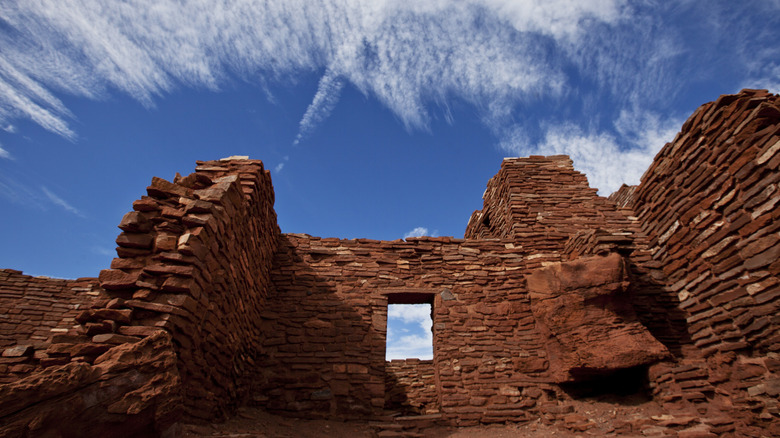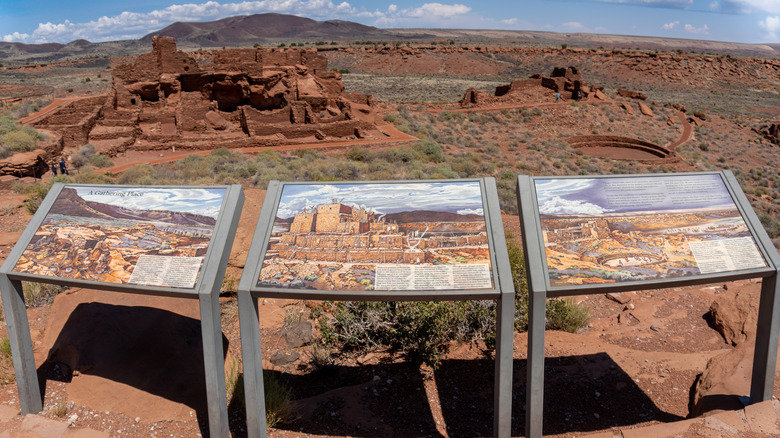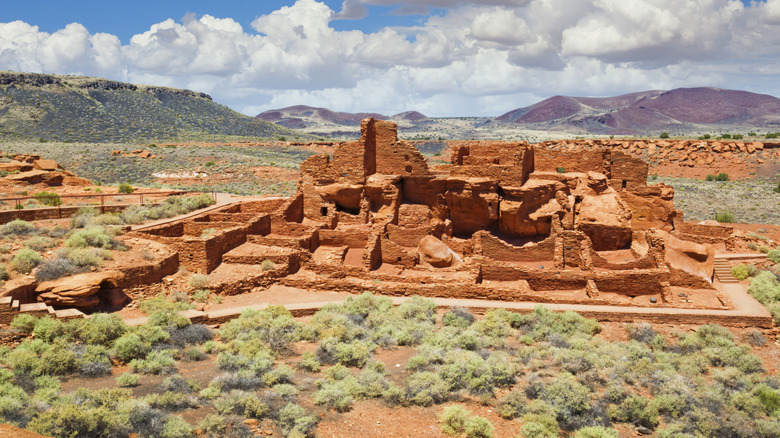Towering Red Rock Ruins And Vast Desert Views Unveil An Archaeological Wonder Of The West
The remains of great communities aren't just found in places like Rome and Athens. In Arizona, you'll discover Wupatki National Monument, home to dwellings, gathering spaces, and ball courts of ancient Native American people. Recognizing the importance of preserving this place, President Calvin Coolidge designated it a national monument in 1924, ensuring future generations could experience its history firsthand.
Today, you can visit the largest freestanding pueblo in Northern Arizona and see the volcanic landscape that played a key role in creating this once-thriving community. Towering red rock structures stand as a striking reminder of the people who called this place home, while many Native American communities still feel a strong connection to the land and its sweeping desert views. Wupatki is also a designated International Dark Sky Park. Without the interference of city lights, it's one of the best places to stargaze in the state. Plus, all of this is just about 30 miles from Flagstaff, one of the snowiest cities in America.
Unlocking Wupatki's history
The first thing to know is how to say the name of this sacred place. According to the park rangers, it's pronounced "woo-pot-kee." The name comes from Hopi words, meaning "it was cut long," reflecting a significant moment in the local clan's history. According to Hopi oral tradition, the people here once prospered, but they began to stray from farming, drawn to distractions like gambling. Their leader, in an effort to guide them back, destroyed a ceremonial object and left. When he returned, the people had resumed their traditional ways.
People have lived in Wupatki for more than 13,000 years, but its most prominent era began in the early 1100s. During this time, it was a thriving agricultural community, with around 2,000 people living within a 50-mile radius. Artifacts found here tell the story of trade networks that spanned hundreds of miles from the area. Mesoamerican copper bells, shell bracelets, and even the remains of macaw parrots were uncovered. Since the birds don't live here naturally, they were probably brought to Wupatki through trade, revealing the far-reaching connections of this ancient community.
Interpretive signs throughout the park help uncover the history as you explore the trails. The incredible structures, including stacked stone walls, ventilation systems, and structures that stand three stories tall, have stood for centuries and offer a glimpse into daily life. You'll see rooms where meals were prepared, spaces used for gatherings, and evidence of sophisticated construction techniques. Standing near these ruins, you can take in sweeping views and vibrant colors of the Painted Desert, blending with patches of grasslands and desert vegetation.
Planning your trip to Wupatki National Monument
While visiting in cooler weather is ideal, traveling here in the summer is still possible if you wake up early. The trails are open from sunrise to sunset. The entrance fee is $15 for those who are walking or biking in the area, or $25 per car. You can purchase your pass online or at the visitor center (note: no cash is accepted). If you plan on visiting multiple parks in the area, the Annual Entrance Pass is $45 and gives you access to Wupatki, Sunset Crater Volcano, and Walnut Canyon national monuments for a year.
Once you enter Wupatki from Highway 89, you'll travel along Loop Road toward the visitor center. This is where you'll find more information about the site, artifacts on display, and restrooms. The monument features many ruins, easy trails that are less than 0.5 miles long, and a few strenuous treks. Behind the center, you'll find Wupatki Pueblo, the largest structure, with over 100 rooms, a ballcourt, and a fascinating geologic feature — a natural blowhole. Although its connection to the ancient Wupatki Pueblo remains a mystery, this unique phenomenon, where air bursts from the ground, holds a cultural and spiritual significance for the Hopi today.
Rangers recommend allowing at least three hours to explore the area, but even with less time, you can still gain a meaningful understanding of 12th-century life. Keep an eye out for wildlife such as lizards, mule deer, coyotes, and rabbits. You may not see very many travelers, as just about 215,000 people visited in 2023. From Wupatki, consider exploring nearby attractions like the Lava River Cave, a geological wonder in Flagstaff with a unique hike, or the Petrified Forest National Park, one of Arizona's most stunning lesser-known gems.


